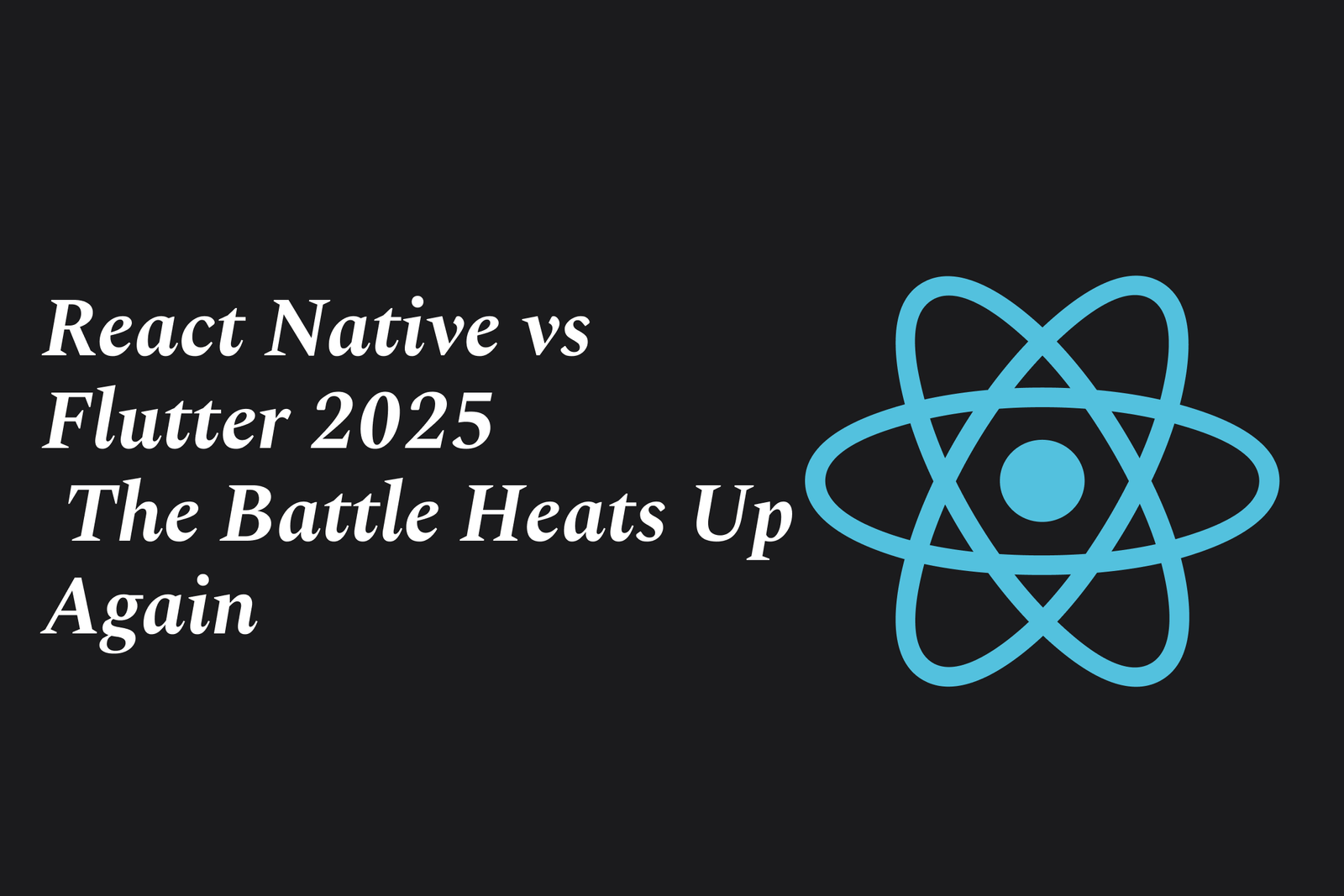React Native vs Flutter 2025: The Battle Heats Up Again
In 2025, the React Native vs Flutter battle intensifies as both frameworks evolve, offering powerful cross-platform app development. Flutter excels in performance and UI consistency, while React Native leads in ecosystem maturity and JavaScript integration, making the choice project-driven.
React Native vs Flutter 2025: The Battle Heats Up Again
1 ) Introduction to the Mobile Development Landscape
React Native and Flutter continue to dominate as the leading frameworks for cross platform mobile app development.
Both frameworks have evolved significantly by 2025, each improving performance, developer experience, and expanding their ecosystems.
2 ) Performance and User Experience
Flutter offers near native performance due to its compiled Dart code and rendering engine, allowing for smoother animations and faster load times.
React Native, powered by JavaScript and relying on native components, has narrowed the performance gap with improvements like Hermes engine and Fabric architecture but still trails slightly behind Flutter in fluidity.
3 ) Development Efficiency and Flexibility
React Native benefits from the gigantic JavaScript ecosystem, making it easier to leverage existing libraries and tools.
Flutter's declarative UI framework and hot reload continue to enhance rapid prototyping and iteration, with its single codebase also targeting desktop and web beyond mobile.
4 ) Community and Ecosystem Maturity
React Native boasts a larger, more mature community, with support from Meta and extensive third party packages.
Flutter’s community is rapidly growing, supported strongly by Google, and has made remarkable progress in stabilizing web and desktop support alongside mobile.
5 ) Tooling and Debugging
Flutter’s integrated tooling in Dart DevTools offers comprehensive profiling, debugging, and widget inspection.
React Native, while improving with tools like Flipper and React DevTools, can sometimes face complexities due to bridging native modules.
6 ) Use Cases and Industry Adoption
Enterprises with existing JavaScript/React expertise tend to lean toward React Native for ease of integration.
Flutter is favored for projects prioritizing custom UI, high performance, and multi platform reach including embedded devices.
7 ) Future Outlook for 2025
Expect continued convergence with hybrid approaches and growing support for declarative UI paradigms in both.
Flutter’s expansion into new platforms and React Native’s push towards full native fabric rendering promise to keep competition fierce.
Ultimately, choice depends on specific project needs, developer skills, and ecosystem preferences.
Summary:
The 2025 showdown between React Native and Flutter is tighter than ever. Flutter leads slightly in performance and UI consistency, while React Native shines in ecosystem maturity and JavaScript integration. Both continue to evolve, making them robust choices for cross platform development in 2025 and beyond.
https://justacademy.in/news-detail/react-native?s-new-hooks-you-didn?t-know-you-needed
https://justacademy.in/news-detail/android-sdk-tool-updates
https://justacademy.in/news-detail/android-system-update-statistics
https://justacademy.in/news-detail/flutter-test-lab-new-features
https://justacademy.in/news-detail/ai-powered-ui-generation-in-flutter
Related Posts
Java supports GDPR and data privacy by enabling secure data handling through encryption, controlled access, and precise data management. It allows developers to minimize PII exposure, ensure data confidentiality, and design workflows that comply with data protection regulations effectively.
Java code quality tools have evolved to include advanced static analysis, integrated security checks, and AI-powered code reviews. These updates help developers detect bugs, enforce coding standards, and enhance security, streamlining the development process and improving overall code reliability.
Java remains a cornerstone in big tech companies, evolving with modern features like records, pattern matching, and virtual threads. Its robust ecosystem, enhanced performance, and growing AI integrations keep it vital for both legacy systems and innovative new projects.
Java and CI/CD pipeline optimizations streamline Java application development by automating builds, tests, and deployments. They improve efficiency through parallelization, caching, and secure secrets management, enabling faster feedback loops and more reliable, scalable software delivery.
Java supports modern cryptography standards through its flexible Java Cryptography Architecture (JCA), enabling integration of advanced algorithms like AES, EdDSA, and post-quantum tools. Libraries like Bouncy Castle offer FIPS-certified, hardware-accelerated implementations for secure development.
Java 23 enhances record patterns by enabling concise, direct destructuring of record components within pattern matching, simplifying type checks and data extraction. This improvement boosts code readability and expressiveness by reducing boilerplate in handling immutable data classes.
Java remains a top choice for mobile app backends, powering scalable, secure, and high-performance server-side solutions. Latest trends include cloud-native microservices, reactive programming, and enhanced JVM optimizations, enabling efficient, flexible, and robust mobile backend development.
Java SE 24 and LTS Java SE 21 offer enhanced features and performance, while Apache Spark 4.0.0 introduces Scala 2.13 support and advanced ML and SQL capabilities. Together, they empower developers to build scalable, high-performance data applications with modern tools.
JUnit 5 modernizes Java testing with a modular architecture, improved assertions, and seamless Java 8+ support. Beyond JUnit, tools like Mockito and AssertJ enhance mocking and assertions, creating a powerful, flexible ecosystem for writing clean, efficient Java unit tests.
Java plays a pivotal role in cloud automation tools by providing a robust, platform-independent language used to build scalable automation frameworks like Jenkins and Selenium, enabling efficient CI/CD pipelines, testing, and orchestration across diverse cloud environments.










